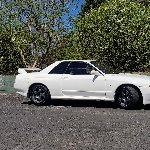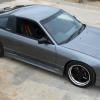PRP trigger, Haltech Ecu, Base timing?
Announcements
-
Similar Content
-
Latest Posts
-
By Murray_Calavera · Posted
@MBS206 yeah it's a short run from battery in boot to pump -
On a 20amp run, on "12V", if you're getting power for the pump direct from battery in the boot, you should be good on 12AWG. If the wiring is from up front, you want to get to a 10awg.
-
Got the speakers wired up in the doors today. I end up cutting the wire where I could access it and put new speaker wire on to run down to the crossovers and ran them to woofer and tweeter. I used the original speaker wire that went down to woofer to reuse the crimps. Mate said he has a spot free to fab my intercooler pipes, dump and other bits and pieces on Monday so I started getting shit out and putting everything together that needs to go down with it. Got the rad in so he can fab the new top pipe to the hypertune hose as well.
-
By Murray_Calavera · Posted
It's 12 gauge Tefzel wire. Should be right for 20 amps. I've clamped the fuel pump wiring, it measured around 20 amps. I can't remember the exact figure, I did it a while ago now, but it was around 20 amps. Still, lots of good info in this thread now. I'll keep investigating and post back with what ends up solving the voltage problem.
-






Recommended Posts
Create an account or sign in to comment
You need to be a member in order to leave a comment
Create an account
Sign up for a new account in our community. It's easy!
Register a new accountSign in
Already have an account? Sign in here.
Sign In Now